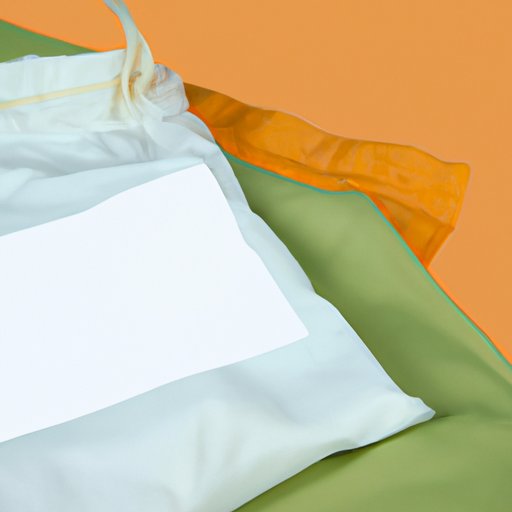
How to Bleach a Shirt: Tips and Tricks
Have you ever pulled a favorite shirt out of the laundry only to find it has yellowed or has a stubborn stain that won’t come out? Don’t worry, you’re not alone. Luckily, bleaching can rescue your shirt and bring it back to life. In this article, we will explore the different types of bleach, the safety precautions necessary to work with it, provide a step-by-step guide, offer alternative natural solutions, and offer style tips for incorporating your newly bleached shirts into your wardrobe.
Types of Bleach
There are three main types of bleach that are commonly used: oxygen bleach, chlorine bleach, and hydrogen peroxide. Oxygen bleach is a non-toxic powder that is best for brightening whites. Chlorine bleach is stronger than oxygen bleach and works quickly to remove stains. However, it can damage colored fabrics and should be used with caution. Hydrogen peroxide is a mild bleach that works well on delicate fabrics.
When deciding which bleach to use, consider the type of fabric the shirt is made from. Oxygen bleach is gentler on fabrics like cotton, while chlorine bleach works well on white cotton shirts. Hydrogen peroxide is ideal for delicate fabrics like silk. It’s essential to treat any stains before bleaching to prevent the stain from setting in.
Although bleach can be a lifesaver in many situations, it does have its drawbacks. Chlorine bleach is a strong chemical that can cause discoloration or damage to colored fabrics, and even skin irritation or other health concerns if used improperly. Be sure to follow proper safety precautions and consider environmental concerns when using bleach.
Safety Tips
It’s essential to take safety precautions when working with bleach. Always read the label and follow the instructions carefully. Wear gloves and goggles to protect your skin and eyes from the bleach. Keep the bleach away from children and pets and only use it in a well-ventilated area.
Be mindful of the fabrics you’re working with and avoid using bleach on delicate items. Test a hidden area of the fabric for colorfastness before applying the bleach to the entire garment. Also, avoid using bleach on clothes with spandex or elastic as it can weaken the fibers.
Common mistakes to avoid include applying too much bleach or leaving the bleach on for too long, which can weaken the fabric or cause discoloration. It’s essential to rinse the fabric thoroughly after bleaching to remove any leftover bleach.
Step-by-Step Guide
Here’s a step-by-step guide to bleach a shirt:
- Fill a bucket with warm water and mix in the appropriate amount of bleach according to the instructions on the label.
- Add the shirt into the bucket, making sure it is fully submerged in the bleach solution.
- Let the shirt soak for 5-20 minutes, depending on the desired level of whiteness.
- Remove the shirt from the bucket and rinse it thoroughly with warm water until no traces of bleach remain.
- Wash the shirt by itself in the washing machine with laundry detergent and warm water.
- Tumble dry on low heat or air dry.
It’s important to remember to wear protective gear throughout the entire process, from initially handling the bleach to removing the shirt from the washing machine. Also, avoid mixing bleach with other chemicals, as this could result in unexpected reactions and potentially harmful fumes.
Bleach Alternatives
If you’re sensitive to bleach or want to use alternative, more natural options, there are several substitutes. Lemon juice is an effective natural bleach that can whiten clothes and remove stains. Fill a spray bottle with a mixture of lemon juice and water and spray the shirt before throwing it into the washing machine. Vinegar is another natural alternative that can remove stains and brighten clothes. Add a cup of vinegar to the washing machine cycle to help brighten whites and keep colors from fading.
While bleach alternatives aren’t as potent as traditional bleach, they offer a more natural, environmentally friendly option that can be gentler on the fabric.
Styling Tips
Bleaching a shirt offers a great opportunity to create a unique, trendy piece. Distressed and tie-dye patterns are stylish and the perfect way to refresh an old shirt. Here are a few styling tips to help you reimagine your newly bleached shirt:
- Create a grunge-inspired look by pairing a bleached denim shirt with edgy black jeans and combat boots.
- For a more polished look, tuck a bleached button-up shirt into a high-waisted pencil skirt or a pair of tailored pants.
- Experiment with different dye patterns by tie-dying a bleached shirt or using bleach to create a distressed effect on a solid-colored shirt.
The possibilities are endless. Bleaching a shirt can breathe new life into your wardrobe and give you a stylish, unique piece that you won’t find anywhere else.
Conclusion
Bleaching a shirt may seem daunting at first, but with the right tools and techniques, you can achieve great results. Remember to always follow safety precautions when handling bleach and to consider all of your options, including natural alternatives. With a little creativity and knowledge of how to properly bleach a shirt, you can create a one-of-a-kind piece that will make you feel confident and stylish.




